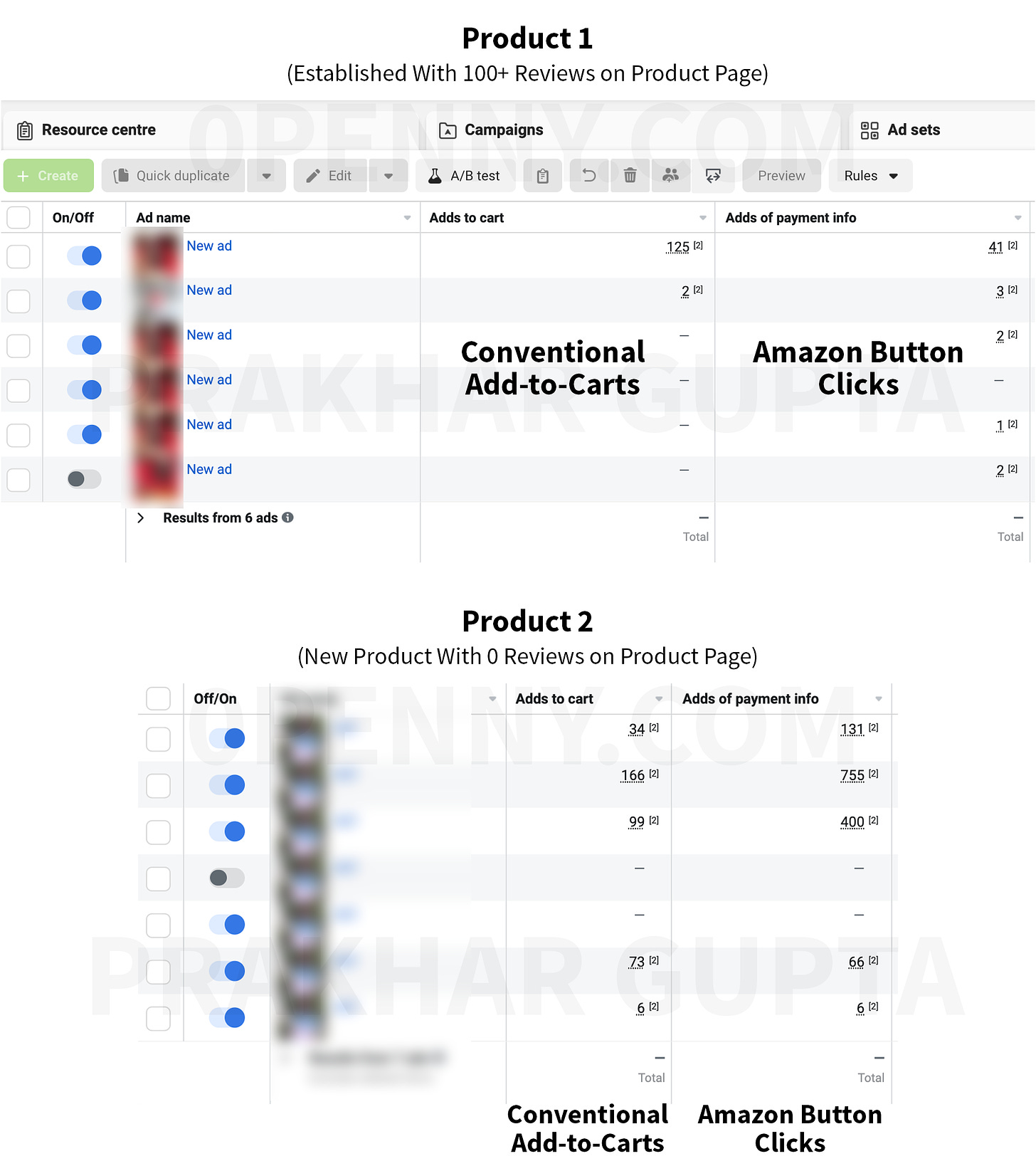As an eCommerce seller, you don’t want to have all your eggs in one basket. Sure, selling on large marketplaces like Amazon is great, but you don’t have direct access to your customers. You can’t email them about new products or remarket to them. You’re also beholden to Amazon, and if you have any issues with your account your business could be in jeopardy.
This is why many sellers say you should sell on your own website.
You can collect email addresses, target customers with remarketing ads and have complete control over your store. The only problem is you’ll never match the number of customers Amazon has.
So, which option is best? In my opinion, you should be selling on both Amazon and your own website. In this case study, I’ll talk about a strategy I used with two clients that generated excellent results.
Comparing Amazon to Individual eCommerce Stores
As we just discussed, there are pros and cons to both options. Let’s take a closer look at the differences:
How to Enjoy the Best of Both Worlds
We recently worked with two eCommerce clients who were faced with this same decision. Our advice was for them to sell on both their own site and Amazon. Here’s what we did:
We created Facebook Ad campaigns that drove customers to the clients’ websites.
We added a “Buy Now on Amazon” button to the site, next to the “Add to Cart” button.
We added tracking pixels on the Amazon button so we could track people who bought the product there. (We used ‘Add Payment Info’ as our event)
When the budget allowed for it, we created separate campaigns that were optimized for Amazon button clicks and purchases.
The Results
What we found was that most customers clicked the “Buy Now on Amazon” button. This is likely because people know and trust Amazon. Here are the results:
72% people preferred to shop on the website for the product with 100+ reviews on the product page
78% of people preferred to shop on Amazon for the product with no reviews on the product page.
It’s very clear that for new stores, giving users an option to buy on Amazon is essential in giving the user what they want.
What About the Drawbacks of Selling on Amazon?
It’s true that there are some downsides to selling on Amazon. However, we’ve developed solutions that address these issues:
Retargeting Customers: With the strategy above, because customers come to your site first you’re able to track them and serve them remarketing ads if you wish.
Can’t Collect Customer Information: Using tools like Pixelme, we’re able to add pixels to the “Buy Now on Amazon” button. This allows us to collect information on anyone who leaves your site to shop on Amazon.
Have to Rely on Amazon’s Algorithm: By using Facebook Ads to drive traffic to your listings, and utilizing FB tracking pixels, you’re able to have more control over your sales. This means you don’t need to rely as much on the Amazon algorithm.
Recommended read - How to Create Retargeting Ads When You’re Selling on a Third-Party Site
About 0Penny
We’ve worked with many different eCommerce companies and understand the importance of having your store. However, we’ve also seen firsthand how beneficial selling on Amazon is.
0Penny continues to change with industry trends and we’re always developing new strategies to stay ahead of the curve. That being said, our number one goal is to respect the wishes of our clients and get them the best results possible.
Pricing
Our Facebook Ad management packages start include A-Z services including setup, creative, copy, research, optimization, monitoring, scaling, and targeting. We also offer Chatbot development services for automating lead generation.
Read More Case Studies
Want to read more case studies like this? Here are the results from some of our other eCommerce campaigns:
How a T-Shirt Company Increased Turnover by 72% to $76,277
How an eCommerce Store in India Got 526 Sales in Just 14 Days
How a Strong Campaign and Effective Website Led to a 260-373% Return on Spend






